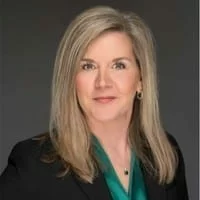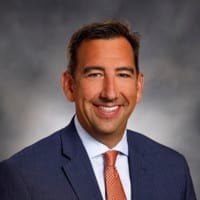
“The role of the CIO has changed totally,” John Halamka declared boldly in his first appearance on This Week In Health IT in 2018.
And the role of the healthcare CIO has continued to develop. With the onset of the novel coronavirus pandemic and the break-neck pace in which healthcare IT accelerated throughout 2020, the role of the Chief Information Officer has incorporated innovation, digital, and operations, along with its original technology-focused responsibilities.
But what have these changes meant for healthcare at large? What does this change in a single role imply for the trajectory of the entire industry?
As health systems have adapted to the evolving responsibilities the COVID-19 pandemic has introduced, IT leaders have also needed to adjust to the changing nature of their own departments and roles. With the onset of a digital era, the once cut-and-dry understanding of information technology has begun to give way to a new world of innovation, operations, and marketing.
The role of the healthcare CIO has been transitioning away from fax machine maintenance and managing software installs even before the pandemic. In 2018, conversations in the industry recognized how the traditional IT role was giving way to an innovative, digital focus.
In shifting from siloed tech leader to a member of the executive team, initiatives revolve around the consumer experience. While priorities once were maintenance and installations, they now range from digital solutions for patient engagement, data management and security, and artificial intelligence. And this was all before the pandemic was on anyone’s radar.
It has become a common theme of healthcare CIOs taking on additional tasks and positions, even aspects that do not normally connect like business decisions.
However, the pandemic catalyzed the evolving role as the need for telehealth, remote patient monitoring, innovative strategies, and mass vaccination management became integral to the survival of health systems.
In interviews with This Week In Health IT, CIOs discussed how this third wave transition has influenced the way they go about their job.
CIO-CDO Tressa Springmann of LifeBridge Health leads the digital and technology initiatives at the integrated delivery network. Like many other healthcare organizations, LifeBridge has been navigating where the responsibilities of digital should be assigned in their teams.
“Is it part of innovation? Is it part of marketing? And at the end of the day, the only thing in our philosophy that differs is who that end-user of the technology is," she said.

Tressa Springmann, CIO at Lifebridge Health
Part of the journey to establish a digital strategy is establishing the “digital ecosystem” that supports future growth and is best for the organization. She said she foresees a team that would grow into the new technology rather than creating separate tracts for legacy and digital initiatives.
This shift also requires teams to look to marketing as integral to digital strategy. Both IT and marketing departments engage with digital tools and focus on consumer experience.
“Now, we have the advent of the very discerning consumer in the healthcare space, and we've got to develop a capability to put these tools directly in their hands and then do a good job supporting them,” she said.
CEOs are looking for someone to lead digital business and transformation initiatives, she explained. However, there needs to be an understanding of technology to do this.
In her organization, Springmann has partnered with the Chief Marketing Officer (CMO) to exemplify the connection within the digital ecosystem. Though the CMO could effectively lead digital activities like digitizing the consumer experience, he does not take on the title of CDO, according to Springmann. If he were to continue to grow in that function, the digital experiences would eventually creep into operations with responsibilities like online bill pay, appointment scheduling, remote patient monitoring post-discharge, and care experiences.
"Very quickly, you get into a purview that marketing's not interested in because they're all in the seller end of this. They're not necessarily on the operational end of this," she said.
Jason Joseph is the Chief Digital and Innovation Officer (CDIO) of Spectrum Health, an integrated system with hospitals, treatment facilities, urgent care, and physician practices.
Upon starting the position, he and the CEO developed a new system strategy and reframed the IS strategy. This strategy now revolves around consumer-focused experiences and improving value and digitization.

Jason Joseph, CIDO at Spectrum Health
Recently promoted to CDIO, the added role of digital speaks to how technology is evolving and transforming.
"You can't separate digital and technology. These platforms are all interconnected. The way we engage with our workforce, our providers, the consumers, patients, members, and our communities is all going to be digital in the future," he said.
Digital is not simply technology, so Spectrum is centering digital transformation is at the heart of their organization and prioritizing the involvement of the healthcare CIO.
"Digital is actually about rethinking the way our business operates and how we actually perform those services. That's really the renovation," he said.
The pandemic aided in accelerating this digital transition, as there was now an immediate need to transfer visits and the overall care experience to the digital. In the cases where they were not digital, they worked to leverage digital and technology to make things safer for in-person patients.
“I think the pandemic has spotlighted the importance of digital technology, data as a way to deliver that care. I think in the past, we may have still thought of it, and technology is just something we had to do to run the place. And I think it's been very, very, interesting and enlightening for so many to say no; it's more than that. This is actually the way we're going to make this all better,” he said.
Chief Information and Digital Officer (CIO-CDO) Tom Barnett Baptist Memorial Health Care, a 22-hospital health system) manages a hybrid role that manages core systems, the organization roadmap, and strategic direction.

Tom Barnett, CIO-CDO at Baptist Memorial
Many healthcare organizations are expanding the CIO’s responsibilities to include digital, as it intersects with the IT departments roles, he explained. While it can vary from health system to health system, digital focuses on patient engagement at its core. Sometimes termed the digital front door, it must encompass three principles:
Tightly integrated tools must be enabled for visits, bill pay, and inquiries, as they transition from in-person to remote management. Currently, his team is in the process of developing an mission statement that will guide their digital initiatives:
"Overall, I would say it's meeting the patient where they're at and allowing them to digitally engage with us for their care in the easiest fashion possible," he said.
The pandemic has served as a catalyst for his health system's digital integration. Barnett explained that part of 2020's lasting impact will be the healthcare industry continuing to look for new ways to embrace digital tools more than ever before.
"Digitization, learning how to work remotely, and focusing on all of the work and only the necessary work needed to drive a result or bring a solution into fruition. I think that clarification, as well as the catalyst that the pandemic has done, is really going to leave its imprint on our industry going forward.” he said.
As SVP and CIO-CDO of SCL Health, Craig Richardville and his team are cultivating a collaborative culture between digital and healthcare IT. Instead of a traditional title, IT became ITDS.
Positions were repurposed and realigned, which created the resources for bringing on VP of Digital Mona Baset. The team focuses on being collaborative, being intentional with their culture, and focusing their efforts on their digital priorities.

Craig Richardville, SVP and CIO-CDO at SCL Healt
Richardville explained that the digital efforts remain a collaboration between his team and the marketing department. Therefore, a digital services steering committee was created to create a conversation between the CMO and digital initiatives. It examines different resources within the company and bring them together with human resources and budgets, as well as coordinates team members on communication, marketing strategies, and operations.
“It really is a very multi-disciplinary group coming together. All for the purposes of digital services,” he said.
There are many components of the system’s digital services, like Salesforce, a program utilized to communicate with patients, providers, and consumers. Richardville explained that he has a unique focus that ties together technologies like:
SCL saw the fruition of its labor in digital through the COVID-19 pandemic. Altogether, SCL’s digital initiatives, strategies, implementations, and tools were integral to the health system’s response, allowing those at a distance to receive the care they needed.
As for his role, Richardville expected to combine the titles and teams of healthcare CIO and CDO eventually, as it is something he has observed regularly outside of healthcare in other industries outside of healthcare.
“We are evolving within healthcare. You've got things of data and analytics. You have digital. You've got transformation, innovation. Those are things that, to me, are just a natural evolution of the role and the responsibilities,” he explained.
Mona Baset walked into a brand new role when she began as the VP of Digital Services at SCL Health. She molded the position to the needs of the health system and used her experience in marketing to focus on consumer engagement, which requires technological enablement in areas like:
For connected experiences to happen, marketing and IT must work together to develop within digital, according to Baset. She explained how the marketing has become an evolving principle within the healthcare industry that focuses on consumer engagement, including departments like IT, innovation, and digital.

Mona Baset, VP of Digital Servies at SCL Health
“Marketing has completely changed. Digital has given marketers a way to understand and personalize consumers so that they can provide really relevant experiences. The consumer has gotten a lot more control, which is great. I think it's a wonderful time to be a consumer and also to be a marketer,” she said.
While her team was primarily a web and application development group when she started, they soon realized that a lot of technology was involved in digital marketing and automation platforms. This is why Baset adopted the digital marketing team into her own.
“Digital marketing still requires so much technology to be able to support those effective campaigns and outcomes. We need each other,” she explained.
Baset and her team worked so the system had foundational capabilities consumers would expect from other industries like travel, banking, and retail. This requires leveraging platforms to their maximum ability, managing relationships with platform vendors, personalizing patient experiences, and providing options for patient engagement.
“Digital is the place and where we want the experiences to happen, but not everybody is comfortable with that. And not every situation will allow for digital interaction...So if somebody calls us, if they engage with us on our website, or if they come into our offices, they’re still feeling that it’s a connected experience,” she said.
Ed Marx, launched his podcast DGTL Voices to combine health and life sciences, including payers, providers, and voices like CDOs and patients. He explained how digital unify the divide between the barriers in healthcare.
"It's really meant to just add to the discussion and try to break down the barriers between payer-provider," he said.
There has been a rising emergence of the dual CIO-CDO role in the healthcare industry. Rather than CIOs taking an additional digital role, Marx has seen individual CDOs being brought from outside industries. Some healthcare CIOs even report to the CDO role, but Marx explained how it is not necessary to split the role between two people.
“I'm glad because we need to learn from others, and at the same time,...if you want to be the CDO, they shouldn't have to get someone from outside because you can do it,” he said.
Marx has seen CIOs manage this transition well. However, healthcare can look to other industries to help guide these transitions, he explained. With digital quickly emerging, Marx uses his podcast to capture the field across the health continuum and create a forum for discussing challenges that cross between sectors. DGTL Voices plans to bring guests from outside the healthcare sector in hopes their insight will assist the industry.
"The hope is that we can all learn from [digital leaders in other industries] so that we don't need them to come in and displace us, but we rather can learn from them," he explained.
CIO of Providence, BJ Moore, is one of many whose position has transitioned into digital and additional operational capabilities.
Digital has touched many components of his role; for example, he oversees brick-and-mortar facilities and now must consider the future of the workforce and care. With the acceleration of tech-enablement during the pandemic, remote patient monitoring and telehealth have challenged the status quo.

BJ Moore, CIO of Providence Health
Moore also explained how digital initiatives play into Providence’s Carbon Negative movement. Providence intends to go beyond carbon neutral and make a positive impact by 2030. Providence will need to introduce smart buildings so facilities can be better leveraged. Even with this grand goal, Moore remained confident that someone must lead the way in healthcare.
"When I took over the role, I predicted if we were the first, there would be many other companies that follow. Because I think those lines of digital versus physical are being blurred," he said.
Their leadership in digital goes beyond their environmental initiatives. During the pandemic's peak, Providence needed to stand up an additional 1,000 hospital beds. In 2019, this would have required a five-to-ten-year endeavor to build a new hospital. Instead, care became digital. With remote patient care, the health system could save a minimum of $1 billion on building costs and also prevent the carbon emitted from construction.
“I think when you talk about a thousand beds that may be physical. But here at Providence, we think a thousand beds can really be virtual, that care at home,” he said.
If patients do not need intensive care, they could choose to be in the hospital or be remotely monitored from home. This is just one of the many ways Providence continues to become increasingly influenced by digital, he said.
William Walders wears several hats at Health First, including CIO and SVP of Operations Support.
Bringing 22 years of experience with the Department of Defense, Walders led his team during Hurricane Dorian. He has since conducted a full IT review that saved the company $13 million. He then caught the eyes of the current CEO, and was then Walders tasked with operating responsibilities after the retirement of the organization’s COO.
“They saw how quickly I was able to scale the CIO world and change the culture, change the perception, get the folks motivated and then do a lot of the operations, the capabilities within IT,” he said.
Walders sees a natural transition for healthcare CIOs to be involved in these additional capacities. The position crosses over with many departments, like HR, supply chains, operations, digital, and other inner-workings of the health system. Walders believes that CIOs should be taking on these responsibilities, including that of digital.
“In my mind, the CIO is the CDO plus the network operations guy. If you extract the CDO element from it or the CIO...they’re just operations, right? You might just want an IT operator that says greenlight screen network is on, and we're safe, but I think that really great CIOs do both,” he said.
In his observation, operations is an increasingly common role for healthcare administrators. Therefore, he expects more operational tasks to be rolled into his role and other CIOs.
“I think you're going to start seeing it from the line service components of it. Facilities folks, IT folks, maybe contracting and supply chain,” he said.
Aaron Miri, CIO of Dell Medical School and UT Health Austin, has also seen an increase in his role, especially with the heightened pressure of the novel coronavirus pandemic.

Aaron Miri, CIO at Dell Medical School and UT Health Austin
“In times like this, you kind of do a little bit of everything...whatever you can do,” he explained.
In the last 10-to-15 years, the CIO position was more nebulous and developing. Now, it has taken on a more substantial place in organizations. Companies have begun a metamorphosis in the definition, requiring that whoever fills the position understands a wide variety of aspects.
Healthcare delivery companies are now looking for candidates that specialize in areas beyond informatics, workflows, systems, and architecture. Now, responsibilities may include oversight in:
Miri believes that the role of the healthcare CIO is only continuing to develop. In the future, CIOs will branch into the operational, marketing, and digital aspects of the industry, as it all connects back to better patient experiences.
“That's the next generation of CIO...It's that dynamic individual that can sit at the board level, have a discussion, go multiple directions, and then bring it all home with how tech can be the enabler,” Miri said.